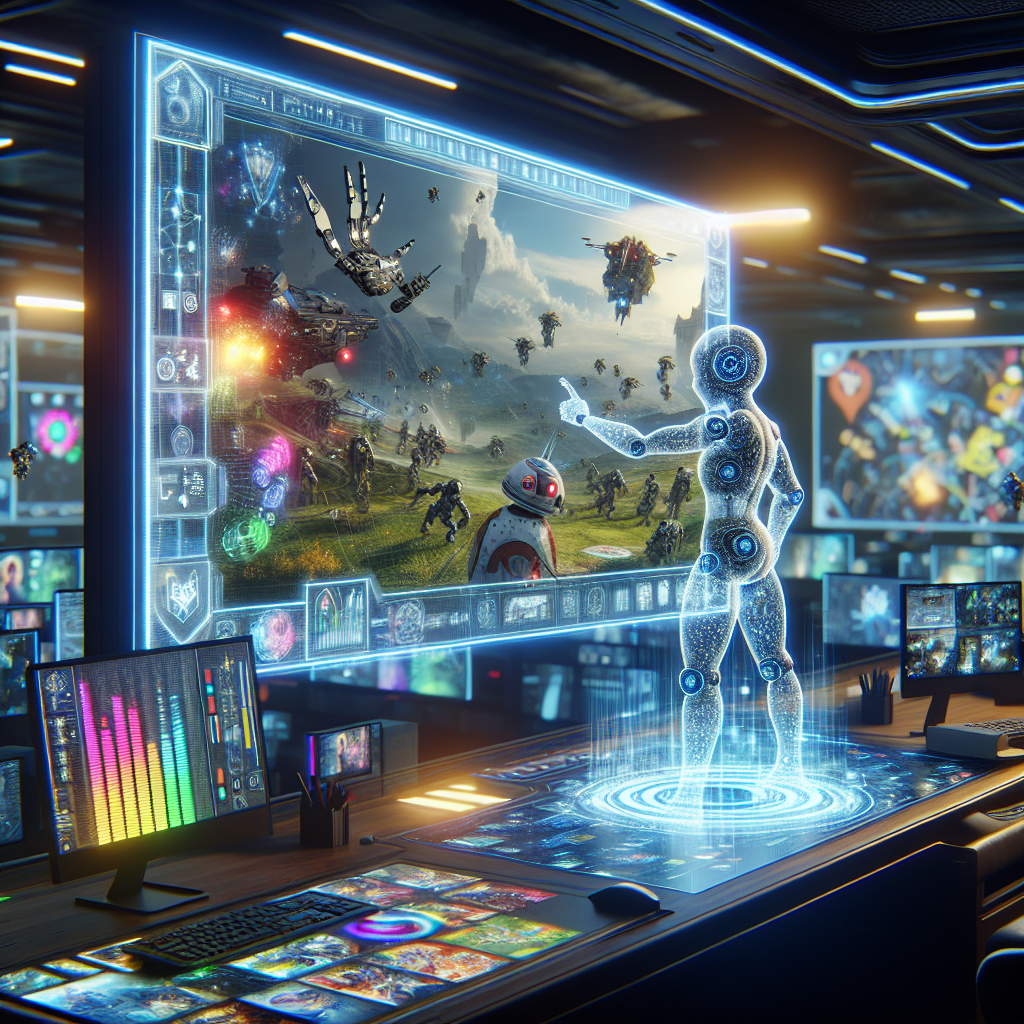Artificial Intelligence (AI) has been making waves in the gaming industry by enhancing game graphics and visual effects. With the increasing demand for more realistic and immersive gaming experiences, developers are turning to AI to push the boundaries of what is possible in terms of visual fidelity. This article will explore how AI is being used to enhance game graphics and visual effects, as well as some of the benefits and challenges associated with this technology.
One of the ways AI is being used to enhance game graphics is through the use of machine learning algorithms. These algorithms can analyze large amounts of data to identify patterns and trends, which can then be used to generate more realistic and detailed graphics. For example, AI can be used to improve the rendering of textures and lighting in a game, resulting in more lifelike environments and characters.
Another way AI is being used to enhance game graphics is through the use of neural networks. These networks are designed to mimic the way the human brain processes information, allowing them to learn and adapt over time. By training neural networks on large datasets of images, developers can create more realistic and detailed visual effects in games. For example, neural networks can be used to generate high-resolution textures and animations, or to enhance the realism of physics simulations.
AI is also being used to improve the efficiency of rendering techniques in games. By using AI to optimize the rendering process, developers can reduce the amount of time and resources required to create high-quality graphics. This can lead to faster development cycles and more cost-effective production pipelines. For example, AI can be used to predict how different rendering settings will affect the final image, allowing developers to make more informed decisions about how to optimize their graphics.
In addition to enhancing game graphics, AI is also being used to improve visual effects in games. By using AI to simulate complex physical phenomena, developers can create more realistic and immersive environments. For example, AI can be used to simulate the behavior of fluids, smoke, and fire, creating more realistic and dynamic visual effects in games.
One of the main benefits of using AI to enhance game graphics and visual effects is the ability to create more realistic and immersive gaming experiences. By using AI to generate detailed textures, lighting, and animations, developers can create games that look and feel more lifelike. This can help to draw players into the game world and keep them engaged for longer periods of time.
Another benefit of using AI in game development is the ability to create more efficient production pipelines. By using AI to optimize rendering techniques and automate repetitive tasks, developers can reduce the amount of time and resources required to create high-quality graphics. This can lead to faster development cycles and lower production costs, allowing developers to create more polished and polished games.
However, there are also some challenges associated with using AI to enhance game graphics and visual effects. One of the main challenges is the complexity of training AI algorithms on large datasets of images. This process can be time-consuming and resource-intensive, requiring developers to have access to powerful hardware and expertise in machine learning techniques.
Another challenge is the potential for AI to introduce bias or errors into the game development process. Because AI algorithms are based on statistical patterns and trends, they may not always produce accurate or realistic results. This can lead to unexpected glitches or artifacts in the final game, which can detract from the overall gaming experience.
Despite these challenges, the use of AI to enhance game graphics and visual effects is becoming increasingly popular in the gaming industry. By leveraging the power of machine learning and neural networks, developers can create more realistic and immersive gaming experiences that push the boundaries of what is possible in terms of visual fidelity.
In conclusion, AI is revolutionizing the gaming industry by enhancing game graphics and visual effects. By using machine learning algorithms and neural networks, developers can create more realistic and immersive gaming experiences that captivate players and keep them engaged for longer periods of time. While there are challenges associated with using AI in game development, the benefits far outweigh the risks, making AI an essential tool for creating high-quality games in the future.
FAQs
Q: How does AI enhance game graphics and visual effects?
A: AI enhances game graphics and visual effects by using machine learning algorithms and neural networks to generate more realistic textures, lighting, and animations in games.
Q: What are the benefits of using AI in game development?
A: The benefits of using AI in game development include creating more realistic and immersive gaming experiences, optimizing production pipelines, and reducing development costs.
Q: What are the challenges of using AI in game development?
A: The challenges of using AI in game development include the complexity of training algorithms on large datasets, the potential for bias or errors in AI-generated content, and the need for powerful hardware and expertise in machine learning techniques.
Q: How is AI being used to improve visual effects in games?
A: AI is being used to improve visual effects in games by simulating complex physical phenomena, such as fluids, smoke, and fire, to create more realistic and dynamic visual effects.
Q: What is the future of AI in game development?
A: The future of AI in game development is bright, with developers continuing to push the boundaries of what is possible in terms of visual fidelity and immersion in games. AI will play an increasingly important role in creating high-quality gaming experiences for players around the world.

